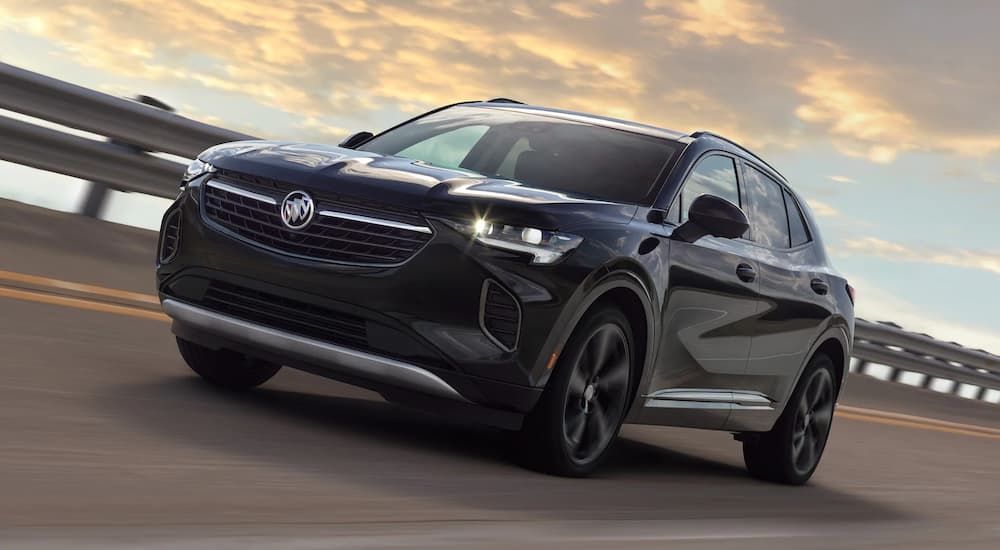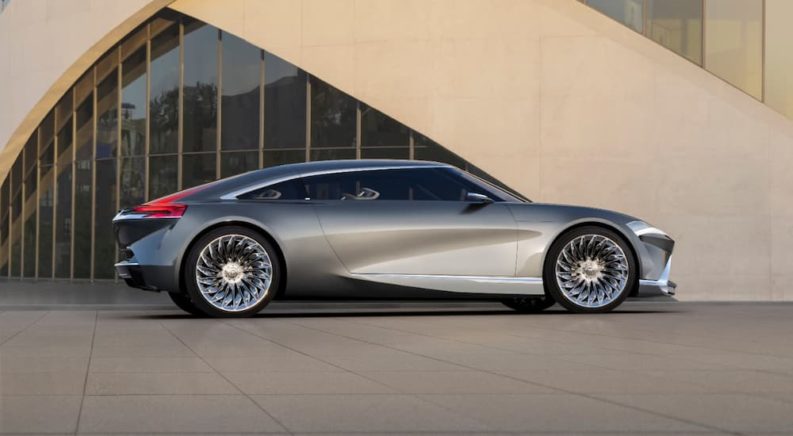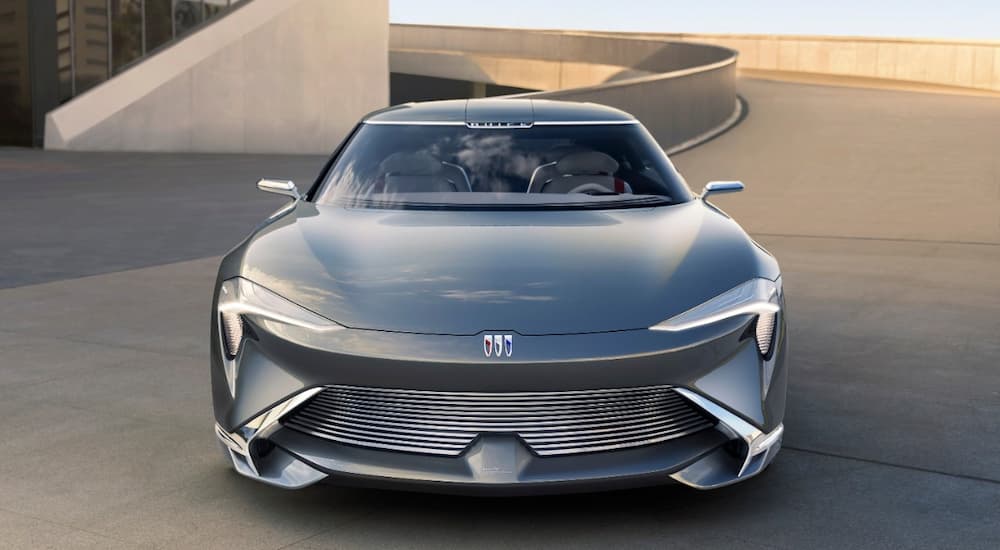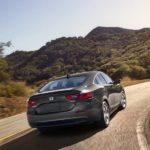What is the future of Buick? It’s difficult to say whether one of the most iconic brands in American automotive history even has a place in the domestic market. As per CNBC, as of 2019, 80% of all Buicks are sold in China, where it is an increasingly popular brand, not at your local Buick dealer. So what happened, and what does the future look like for the three shields? Your dealer will provide a two-word answer: Electric Vehicles.
That’s the buzzword for modern automotive innovation, whether consumers want it to be or not. GM has made a commitment to become carbon neutral by 2040 and, in doing so, has committed to having a 100% EV lineup for both GMC and Cadillac by the mid-2030s. With Buick, GM is being even more ambitious. Buick is set to have an all-electric lineup by the end of the decade. No more gas cars.
With its first EV set to launch in 2024, Buick has more than stated its intentions. They are not the brand that’ll be associated with grandpa’s driveway anymore.
A History of Innovation
It is not as though this is the first time in its 123-year history that Buick has changed its image thanks to its own technological innovation. Begun in 1899, Buick recovered from near bankruptcy in 1904 to surpass both Ford and Cadillac––not yet part of GM––in combined automotive sales, making it the cornerstone upon which the fledgling General Motors was built. Not soon afterward, Buick patented technology for the revolutionary overhead valve engine, which created between 22 to 29 horsepower, an astonishing figure for the early 20th century.
Louis Chevrolet, the co-founder of the brand that shares his name, began his automotive legacy as a racing driver for Buick. Buick rally raced around the world in 1914. The brand then created the first mass-produced V6 engined vehicle in 1962 with the Special, built aircraft engines and ambulances during World Wars I and II, and created a muscle car icon in the Riviera.
The slump of automotive creativity escaping off the factory floor at Buick really began in the late 1980s. The brand was going global in the 1990s, so the designs had to be subdued in order to sell the massive quantities GM was hoping for. It was around this time that older Americans, those for whom the Buick had been the family car that went on to be their car, began to be Buicks largest market share. This is why the millennial generation so closely associates Buick with their grandparents. And the brand remained happily synonymous with that elder class of buyers until the last decade.

Attracting Younger Buyers
Buick has made a concerted effort to draw in a younger clientele here in the United States. One might think that bringing over some of the cool-looking cars they’re selling in China might entice a younger audience, but that, unfortunately, is not the case.
Studies have shown that younger generations are increasingly disinterested in both driving itself and in cars. They don’t want the hassle or financial burden of ownership. However, with the elder sect of millennials beginning to have families, an increase in sales of a certain vehicle type skyrocketed in the 2010s: SUVs.
There’s a reason companies like Ford have committed to a sedan-less lineup: younger drivers don’t want them. They want SUVs. They want something that provides the illusion of safety while also giving them enough room to haul their families and gear.
Buick, doing a complete 360 in 2020, dropped all vehicles not associated with the SUV craze. The current lineup, a sleek selection of premium crossovers, is a study in “E’s”: Encore, Envision, and Enclave, with each increasing in size from compact to full.
With advertisements claiming that your eyes have not, in fact, deceived you, Buick rolled out its new marketing angle in the late 2010s. Aimed specifically at a younger crowd, everyone in the advert was surprised to find themselves either inside or searching for a Buick that was unlike any Buick they had ever seen before. And speaking of Buicks no one has seen before…
The EV Investment
Finally, we’re onto the part where we talk about Buick’s announced transformation to an EV brand. It’s no secret that the automotive industry has a vested interest in expanding the EV market. With calls from governments and activists alike to lower the globe’s carbon emissions and autos being the chief culprit of the climate change vitriol, established brands need to begin committing to EV production.
At the start of this year, GM made a $7 billion investment––the single largest investment in company history––in the production of four manufacturing facilities in Michigan, solely dedicated to the creation of eclectic cars.
There is no word yet on where the manufacturing for Buick’s announced EV lineup will be, but we do know that with the EV lineup comes a whole new look for the three shields. Announced at the beginning of June, Buick is launching its concept for the future with the Wildcat EV.
The Wildcat EV Concept – Exterior Design
The Wildcat title has long been reserved for the Buicks that were going to change the name of the game for the automotive company. The nameplate first appeared in 1953, when Buick was going through yet another design transformation.
From Buick itself, we know that all of its electric vehicles will bear the name Electra. So, if an electrified version of the Enclave premiers, it will be titled the Enclave Electra. Again with the “E’s.” Still, this Wildcat EV concept stands in stark contrast to the image Buick has developed for itself over the past decade.
Shrewd interpreters of automotive design will immediately notice that the famous tri-shield logo has been modernized. The shields in the new logo are sleeker and inlay directly into the body of the car in a straight, one-after-the-other, horizontal fashion. The famous badge of three climbing shields encased in a circle of silver is no more.
Frankly, the new logo works with the overall design of the Wildcat, which has been described by Buick as “ready to pounce.” Everything about it screams forward motion. The lines of the car all arch forward in an elegant fashion towards the checkmark, micro-LED headlights, and the trapezoidal grille. The concept also includes semi-swing doors, a sweeping windshield that seems to wrap around the entire vehicle, giving a sense of wide-open space, aluminum body panels, blade-style tail lights, and 18-spoke “Jet Age” turbine wheels.
The Wildcat EV Concept – Futuristic Interior
The interior of the Wildcat EV is a lesson in futuristic automotive design. A prominent digital center console provides state-of-the-art graphics and color contrasts to create a floating sensation. This feeling of floating continues to the cockpit-style seats with floating headrests and a lightweight, tri-spoke steering wheel.
Another element of the concept interior is the integration of artificial intelligence utilizing biometrics. Essentially, the Wildcat is keeping an eye on you by monitoring your heart rate and adjusting the state of the cabin to help calm you down. Buick has created what it likes to call “Zen Mode,” which, when activated, will dim the cabin lights, disperse aromatherapy scents, and engage the massaging seats.
Will Buick EVs Be Successful?
While the Wildcat EV Concept is just that, a concept, it shows exactly what Buick intends to do with its future. If Tesla is the benchmark against which all other modern electric vehicles are judged, then what Buick is prepared to do will bring an American name brand that much closer to the Tesla charisma. The Wildcat is intended to showcase Buick’s new, expressive design in one vehicle. It’s fully electrified, fully futuristic, and the most exciting-looking Buick at least since the 1970s. If this is the future of Buick, we’re all in for one wild ride.





